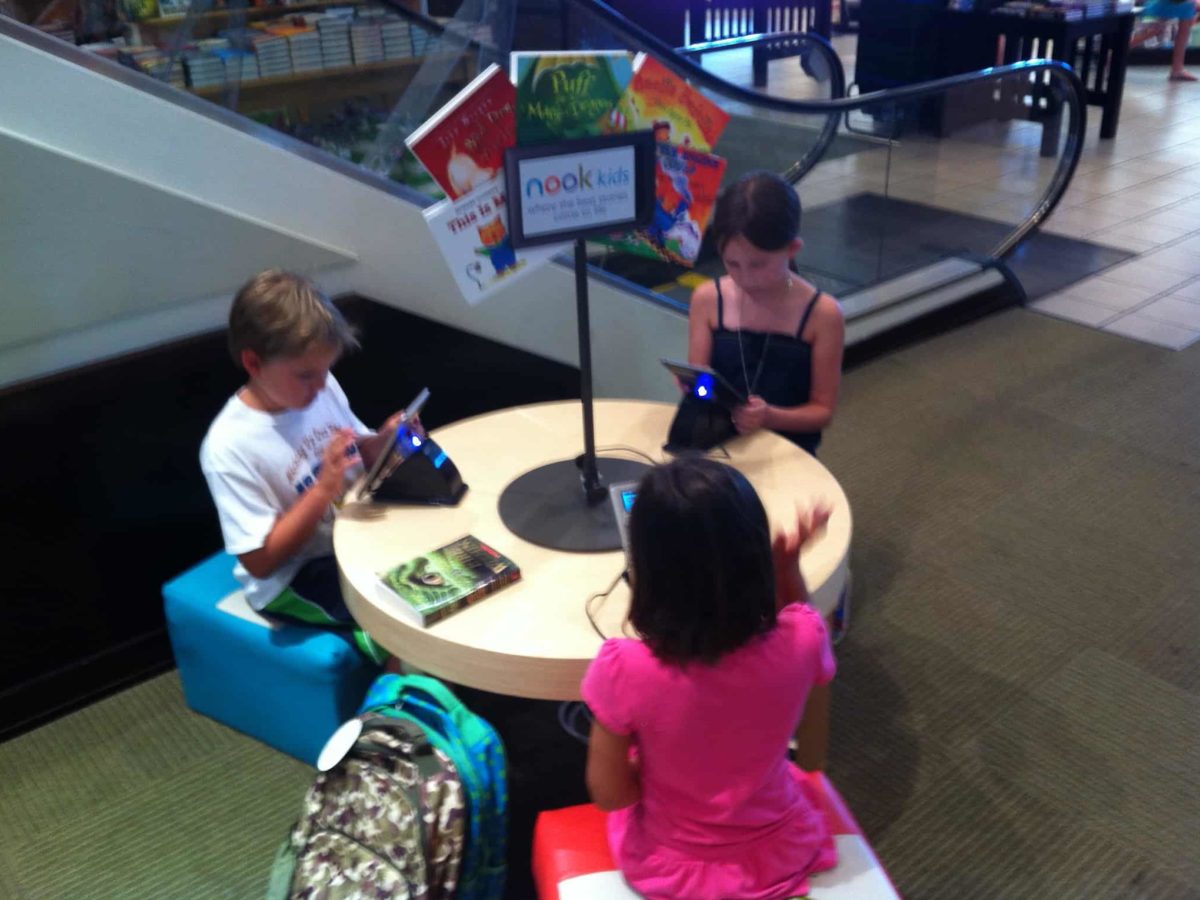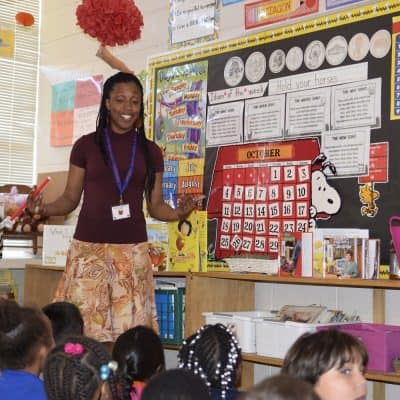Each summer, former Perquimans Central School Principal Melissa Fields has the typical worries that any school principal would have about her students. She worries about their safety and if they are going to keep busy during their time away from school. She hopes that they will have some fun during vacation too.
Fields also worries about her youngest students, like rising second-grader Blair Russell (now a fourth grader). That is because younger readers often backslide from their newly-gained reading skills over the summer because they do not have daily exposure to books and other reading materials. In 2012, Fields started thinking about how she could help Russell, and dozens of other students like her, retain, and strengthen literacy skills over the summer break so that they would arrive at school in late August better prepared to learn.
Fields, a former librarian, understood the importance of connecting books, young readers, and technology. She knew that if she could get those three together, it would help to address the summer slide.
Yet, Fields faced two daunting challenges:
- Devising a way to keep young students engaged in learning during the summer
- Finding the money to develop and run such a program.
Finding resources to help these young learners was particularly challenging in Perquimans County as it is a small, rural community tucked away in the remote northeastern part of the state. With barely 1,800 students, Perquimans County Schools (PCS) is one of the state’s smallest school systems. Sixty-one percent of students in PCS are eligible for free or reduced-cost lunch.
“We noticed that the summer slide was really killing us,” said Fields. “We got to thinking, wouldn’t it be neat if kids had books in their hands all summer? We were thinking outside the box about what we could do to improve literacy.”
With North Carolina’s selection as one of the 12 recipients of a federal Race to the Top grant, there was a portion of the nearly $400 million state total available for districts to use to support innovative local initiatives.
Buying enough books to keep 152 rising second graders engaged in reading seemed like an impossible task — both financially and logistically. Getting that number of books into the hands of children spread throughout a county with limited transportation options was also a daunting undertaking.
“You can’t carry a backpack with 40 books in it — or handle the logistics of getting back and forth to check out two or three books so you can make that summer a powerful learning time instead of just a downtime,” said Perquimans County Schools Technology Chief Victor Eure.
So, the obvious: What about giving the students a device that would bring as many as 40 books to the students at one time, that weighed less than a pound and easily fit into a backpack?
“By using technology to increase access to books, we hoped children would read more and sustain reading skills throughout the summer break,” Fields said.
By combining some funds from Race to the Top with Title I and other technology dollars, the school system was able to partner with Barnes & Noble Booksellers and purchase 160 Nooks for second graders.
Jessica Lawrence, the community business development manager for Barnes & Noble in Greenville, worked with PCS to roll out the program. She coordinated the sale and delivery of the Nooks, helped with book selection and trained school staff. Lawrence even offered training sessions so parents could learn how to use the Wi-Fi-enabled Nooks.
Of the 152 students eligible to receive a Nook, 86 participated in the summer program. Students received their Nooks at school. Once they finished books, they could head to the local library to upload more.
“Just having two or three books can make a big difference,” said Fields. “Having the E-reader makes that even more enticing for our kids.”
The results? First, all but one Nook was returned at the end of the summer. And all of the Nooks were returned in working condition.
The big news was that students who participated in the summer program earned higher scale reading scores in the following school year than those who didn’t take part. More than a third, or 36 percent, of the students who took part in the program saw an improvement in their reading skills. “Those who had the Nooks did better during the school year,” Fields said.
What about Blair Russell? That summer she went through three Nooks, read 278 books and didn’t go anywhere without the reader. “She just took it everywhere she went, whether she was at a ballgame, whether she was in the car on a trip, she just had it with her,” Fields said. “When her birthday came that October, she got her very own Nook.”
Not only did the program pay off for the school system and the students, it also landed them a special party.
In addition to providing the Nooks, Barnes & Noble also made all of the participating students eligible for the booksellers’ special summer reading program for young readers. When students turned in a log to show that they had read six to eight books, Barnes & Noble provided them with a free book. That fall, Lawrence, the Barnes & Noble rep, showed up at the school with dozens of books for students, and all the ingredients for an ice cream party.
The Nooks remain a part of the school system’s technology for students. But in the summer of 2015, Fields and her team adopted a different approach to keeping young students up-to-speed during the summer.
With the use of federal Title I funds, a “Read and Feed” bus made visits every Wednesday over seven weeks to three neighborhoods in the county where there were significant numbers of at-risk students who also qualified for nutritional assistance.
Students from local elementary and middle schools boarded the bus to get lunch and story time.
“We tried to keep it current,” said Fields. “We talked about sharks and the ocean (because) all of that was in the news, and we focused on baseball around the time of the All-Star game. “
Math and other subjects were mixed in. After the sessions, as kids left the bus, each received a handout with exercises to follow-up on the story time discussion along with an age-appropriate book.
“We saw about 60 kids each Wednesday and they really had a good time,” said Fields.
- The data indicated that overall, all students experienced some level of a summer slide in basic reading skills. However, students who participated in the Nook program had a lower rate of skill loss.
- End-of-Year first grade data indicated that students who participated in the Nook program finished first grade with lower Scale Scores and individual Literacy Sub-Domain Scores. However, after participating in the Nook program, the Beginning-of-Year second grade data indicates that the students who used the Nooks out-performed students who did not in every single area assessed with the STAR Early Literacy program.
- The data also indicates that 34.6 percent of students who participated in the Nook program reflected growth during the summer.



